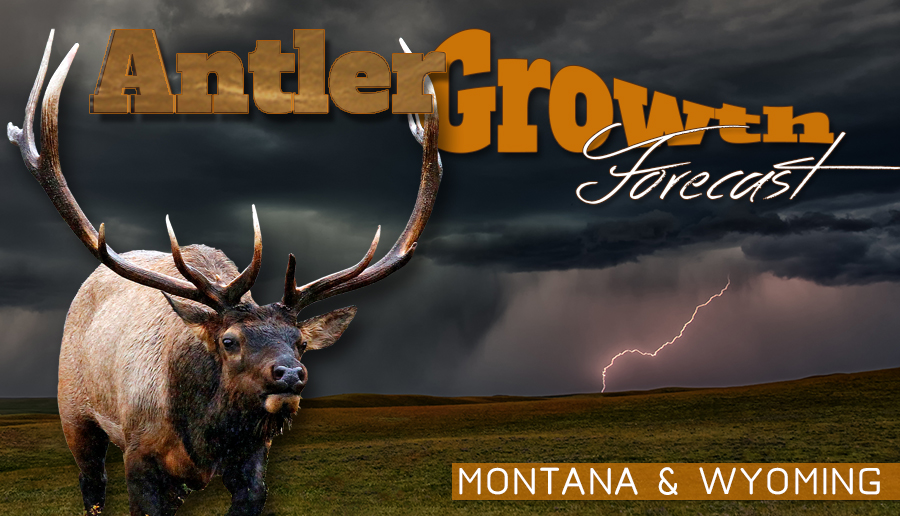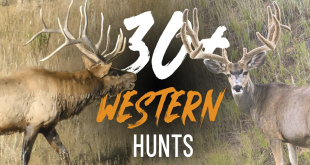It looks like we may finally be getting some moisture after a winter that was unusually warm. Less than one hundred miles north of us in Montana they have already been fighting fires. Not exactly normal for what we consider the tail end of winter. Yet, this week I can look out my window and see snow covered peaks that are steering us towards better conditions across the Cowboy state.
According to the SNOTEL data, Wyoming looks to be heading towards normal precipitation levels in most areas and mild drought in others. After a banner year for moisture and warm temperatures like what we had last year and even to some degree stretching back to the wet fall of 2013 this could be a good thing. Deer herds seem to be recovering slightly from the rough winter of 10/11 and the drought that has hit Wyoming hard the last few years.
In real world terms the type of precipitation we receive is just as important as when, especially when it comes to what we all want to hear about, antler growth. Deer and elk have shed last year’s antlers about a month ago and some are already starting to grow their new set.
Based on the late spring showers and snow flurries we have had we should see elk with average to better than average fronts in most of Wyoming. With a little rain in the later summer months we might even see good backs and long main beams. Mule Deer should carry their mass well and to that end have long tine length to compliment it in most of the Cowboy State.
However, this doesn’t mean that we won’t have areas of drought inside Wyoming. The Upper and Lower N. Platte drainages have only averaged 82% and 79% of normal precipitation, meaning the famed elk area 7 could take a hit in what is normally a premiere elk unit in our state.
The further south towards the Colorado border you go, the better off you should be for elk and deer antler growth. The snow storm that just hammered the I-80 corridor, shutting it down for several days, has the area from Rawlins east all the way to Cheyenne sitting in much better shape than it was a month ago.
However, from Rawlins West it might be a good idea to wait for next year to burn your mule deer points in some of Wyoming’s blue chip units. The lack of precipitation there could cause weak growth on the fronts of deer and elk and I would not use my valuable points in units like that in a less than stellar year.
Montana is in rough shape and taking a look at their data, as well as the plumes of smoke that have already settled into the Powell valley from the North, it is no shock that it looks to be a tough year there. The closest zone to normal precipitation levels is the Upper Clark Fork at 80%. Wyoming has several zones well over 100% and those numbers continue to rise with the spring mountain snowfall. Montana just pushed to these numbers with recent storms and is going to really struggle to meet normal conditions, even with a few more storms.
The northwest and southwest corners of the state are in particularly rough condition. The Madison area is sitting at 63% of normals and Kootenai and Lower Clark Fork haven’t even broken the 60% of normal mark. If you drew a limited entry tag in Montana or are planning to take advantage of their OTC options, adjust your antler expectations accordingly. It could be a rough season!
 Eastmans' Official Blog | Mule Deer, Antelope, Elk Hunting and Bowhunting Magazine | Eastmans' Hunting Journals
Eastmans' Official Blog | Mule Deer, Antelope, Elk Hunting and Bowhunting Magazine | Eastmans' Hunting Journals







Thanks Guy, and as always, informative and to the point.
Sounds like Elk Montoin / Kelly Cattle Company Hunts may be a good pace to find some Elk Horns. Good news / booking now